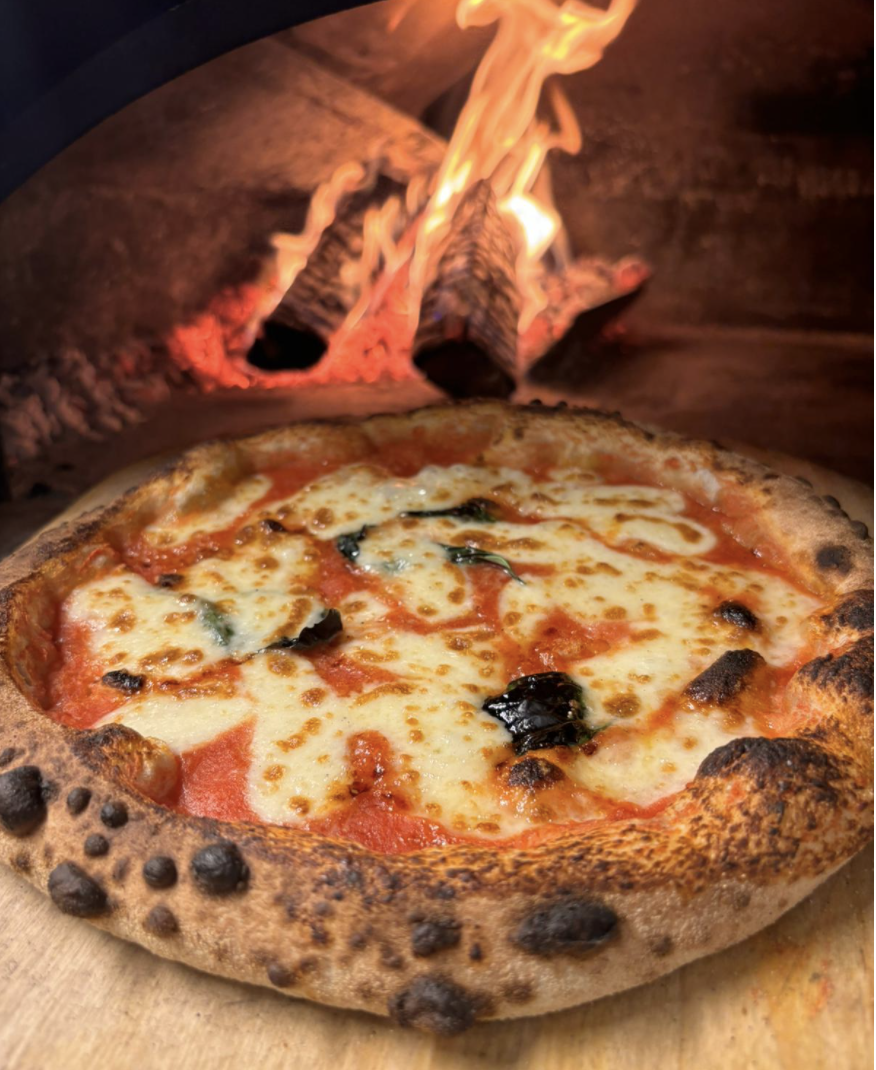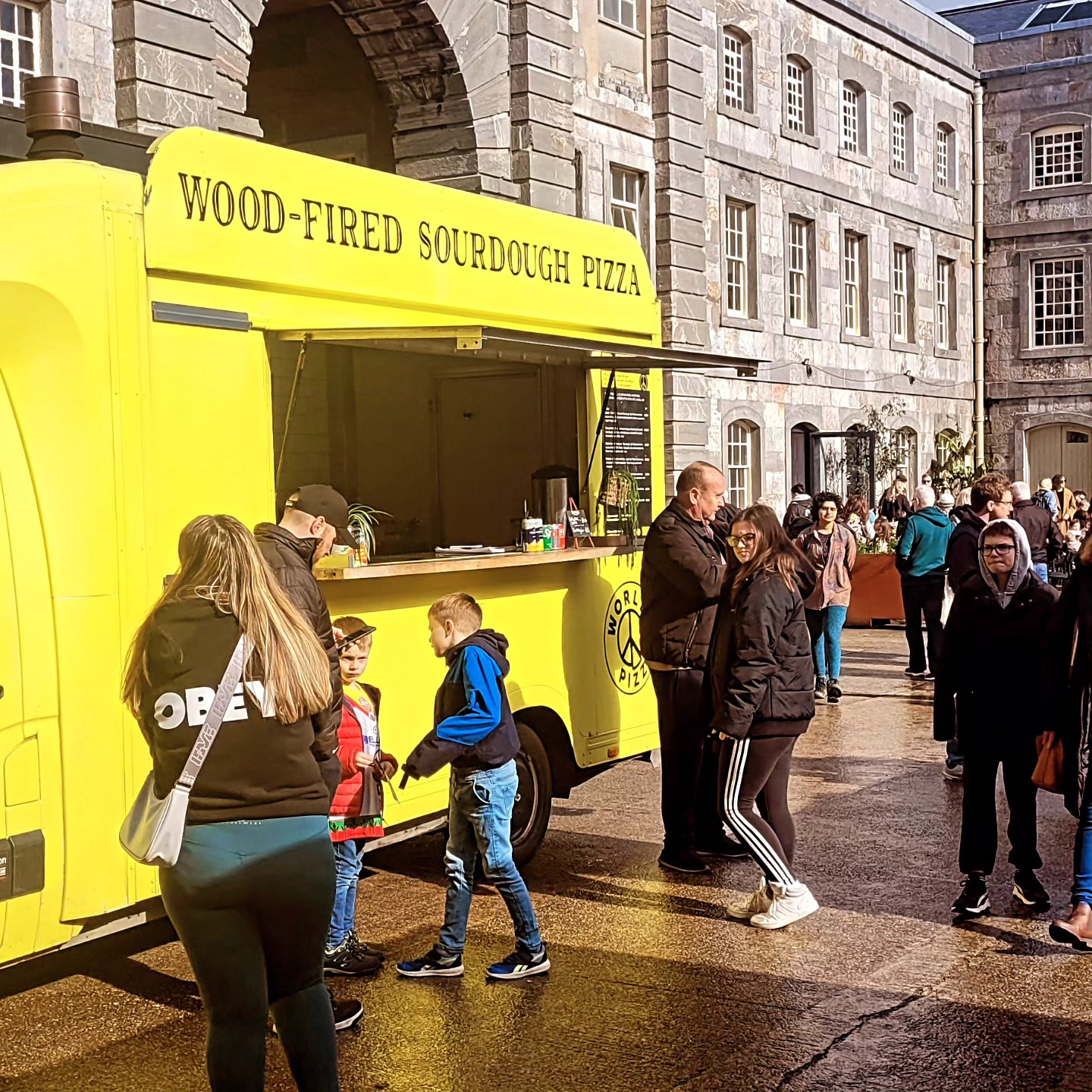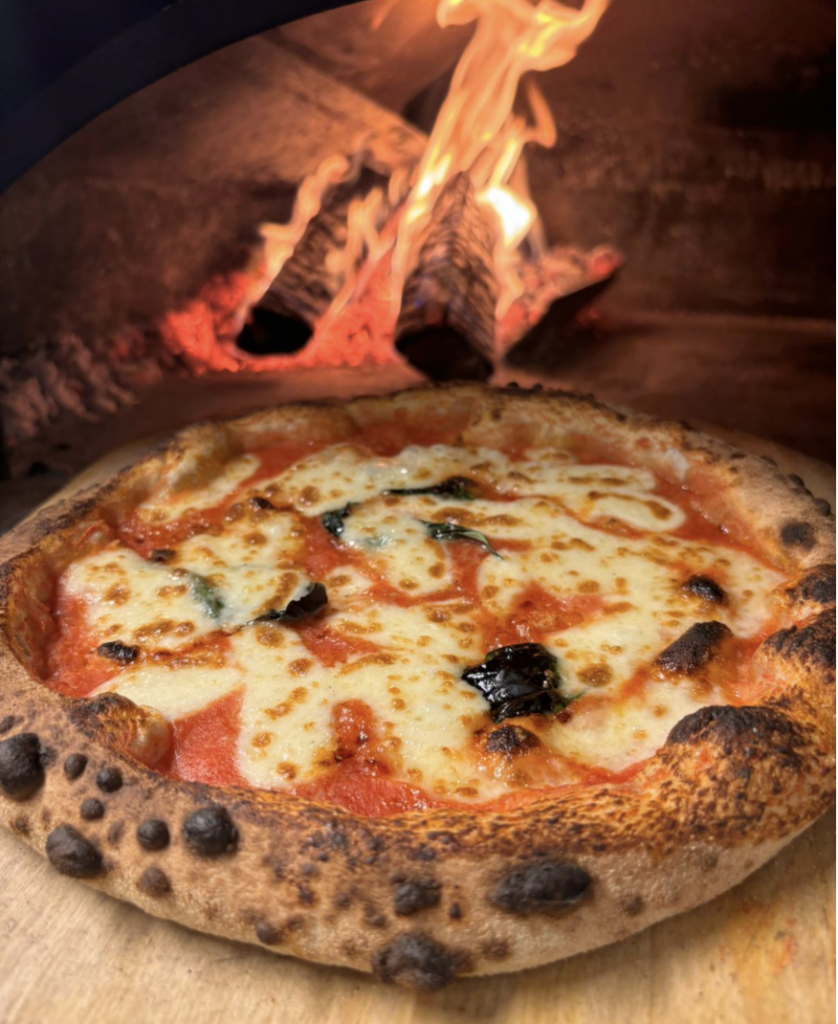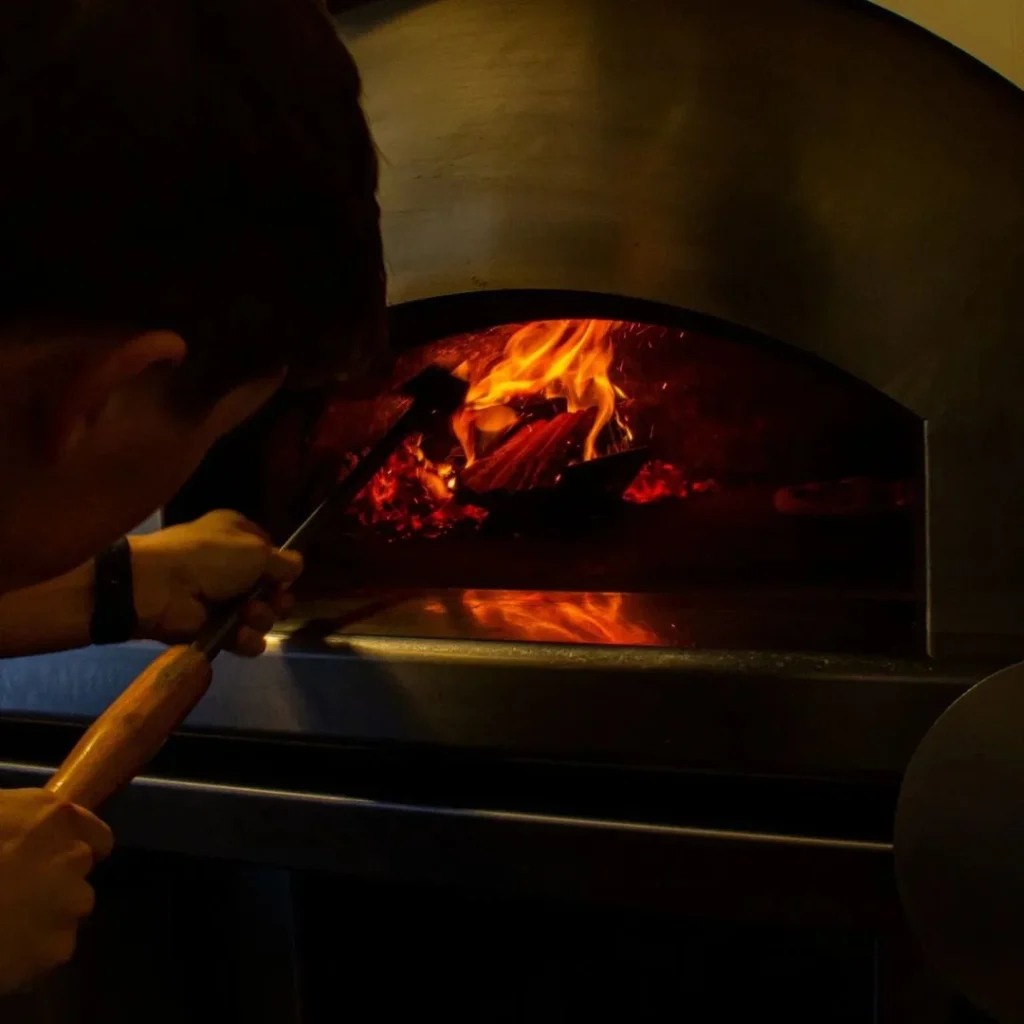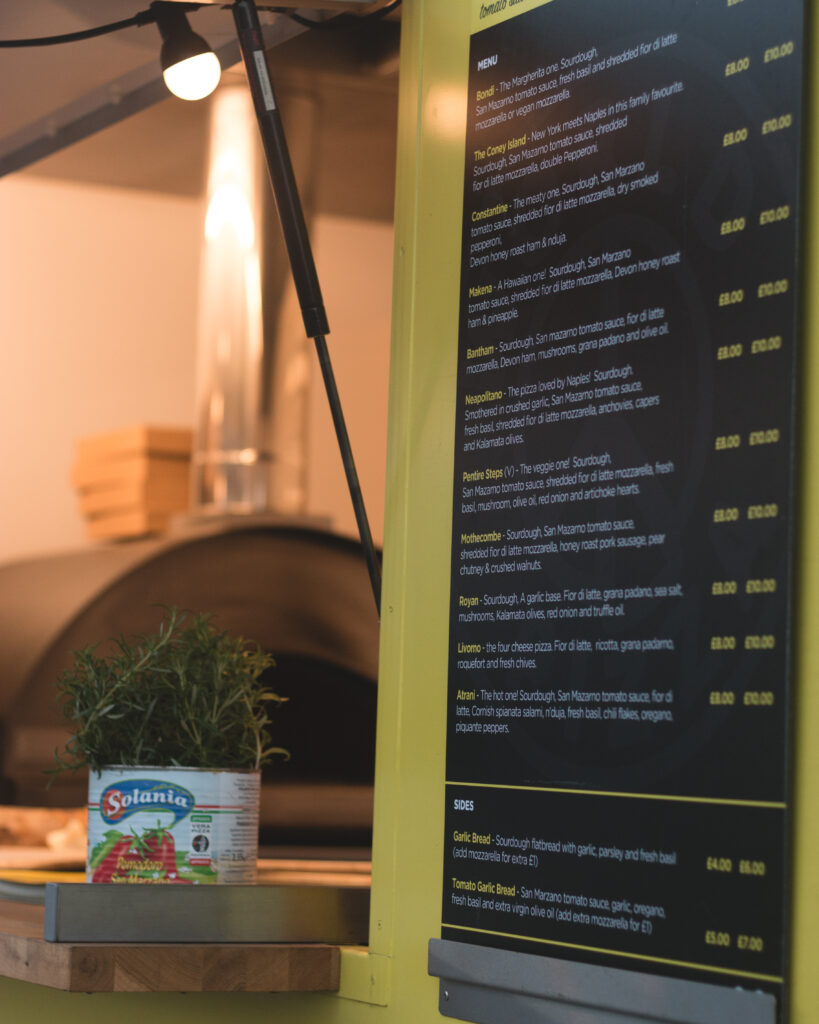Neapolitan pizza, with its thin, crispy crust and simple, yet flavorful toppings, is a culinary gem that has captivated food lovers worldwide. While enjoying a slice in Naples is an unbeatable experience, you can recreate this authentic taste in your own kitchen. Here’s a comprehensive guide with tips to help you make the most authentic Neapolitan pizza at home.
Continue readingThe Allure of Wood Fired Pizza Ovens: A Closer Look
There’s something undeniably enchanting about a wood-fired pizza oven. From the distinct smoky flavor to the inviting warmth of a crackling fire, wood-fired ovens offer an authentic pizza experience that is tough to match. While gas-fired ovens certainly have their merits, for the true pizza aficionado, the wood-fired oven is a clear winner. Let’s delve into why wood-fired ovens are often the preferred choice for crafting the perfect pizza.
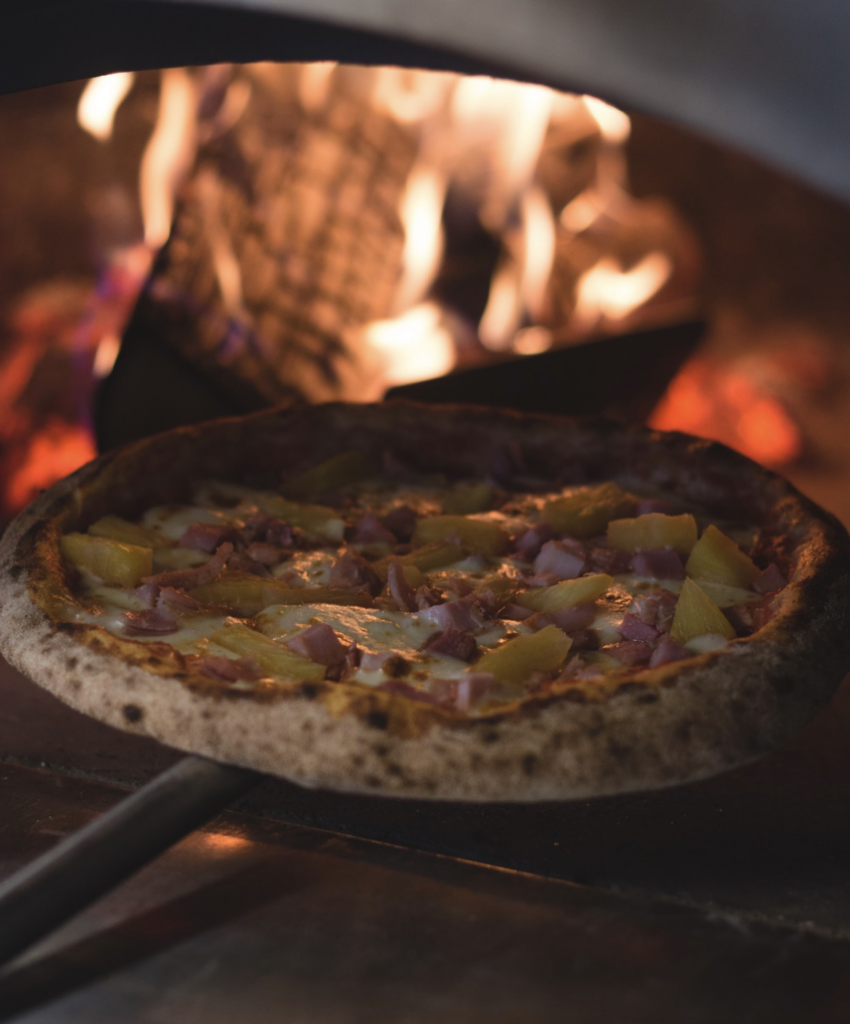
1. Unmatched Flavor
The biggest advantage of a wood-fired oven is the unique taste it imparts. The wood used in these ovens can vary from oak to cherry, each adding a distinct smoky nuance to the pizza that cannot be replicated by any other cooking method. This smoke infuses the pizza with a rustic, old-world flavor that elevates it from merely good to truly gourmet.
2. Optimal Heating Characteristics
Wood-fired ovens excel in their ability to reach soaring temperatures—often up to 800 degrees Fahrenheit (around 427 degrees Celsius). These high temperatures create a perfectly charred crust in a manner of minutes while keeping the toppings juicy and flavorful. The oven’s uneven heating might seem like a drawback, but it actually allows for skillful chefs to rotate the pizza, achieving an ideal crispness and a beautifully blistered crust that is both airy and crunchy.
3. Speed and Efficiency
When it comes to cooking speed, wood-fired ovens are unparalleled. A pizza can cook in as little as 90 seconds, making these ovens a favorite in bustling, high-volume settings where both speed and quality are paramount. This rapid cooking preserves the nutrients in the toppings and offers a fresh, fiery taste that is simply irresistible.
4. Artisanal Cooking Experience
Using a wood-fired oven involves more than just cooking; it’s an art form. Managing the fire, choosing the right wood, and mastering the rotation of the pizza requires skill and dedication, which can be incredibly rewarding. For culinary enthusiasts, the process of cooking with a wood-fired oven is as satisfying as the delicious results.
5. Aesthetic and Ambiance
Beyond just the food, wood-fired ovens contribute to the ambiance of any dining setting. They serve as a cozy hearth where people can gather and enjoy the warmth of the fire. This makes wood-fired ovens not just a cooking appliance but a centerpiece that enhances the dining experience.
6. Eco-Friendly Option
For those concerned with sustainability, wood-fired ovens have an edge. When using responsibly sourced wood, these ovens can be a more environmentally friendly option compared to fossil fuel-dependent gas ovens. Moreover, the natural decomposition of wood means less environmental impact in terms of waste.
Conclusion
While gas-fired ovens offer convenience and consistency, they simply can’t match the superior taste and enchanting experience of a wood-fired oven. For those who cherish the craft of pizza making and savor the distinct flavors that only wood can provide, a wood-fired oven is the ultimate tool. It’s about embracing tradition and enjoying a culinary ritual that has been cherished for centuries. Choosing a wood-fired oven isn’t just about cooking; it’s about creating memorable, flavorful experiences that bring people together.
The Rise of Food Trucks in the UK: A Closer Look at the South West’s Culinary Revolution
The Rise of Food Trucks in the UK: A Closer Look at the South West’s Culinary Revolution
In recent years, the UK has witnessed a remarkable surge in the popularity of food trucks, marking a significant shift in the way Britons think about and consume street food. This trend is not confined to the bustling streets of London or the hip areas of Manchester; it’s a nationwide phenomenon that has seen an impressive growth, particularly in the South West of England. Here, the fusion of local produce, innovative culinary talents, and a growing appetite for diverse and accessible dining options has created a vibrant food truck scene that’s worth exploring.
A Taste of Freedom: The Appeal of Food Trucks
The food truck industry in the UK has flourished for several reasons. Firstly, there’s the allure of independence and entrepreneurship. For chefs and food enthusiasts, food trucks offer a relatively low barrier to entry into the culinary world, without the significant overheads associated with traditional brick-and-mortar restaurants. This has encouraged a wave of creativity and innovation, allowing vendors to experiment with menus and offer unique, often locally inspired dishes that cater to a wide range of tastes and dietary requirements.
Moreover, the mobility of food trucks means they can bring gourmet dining to locations where traditional restaurants might not thrive, from rural beauty spots in the South West to festivals, weddings, and corporate events. This versatility has broadened the reach of quality dining experiences, making them more accessible to the public.
The South West: A Culinary Hotspot on Wheels
The South West of England, known for its picturesque landscapes, bustling seaside towns, and rich agricultural heritage, has become a fertile ground for the food truck industry. The region’s abundance of fresh produce, dairy, and seafood supplies a plethora of high-quality ingredients that food trucks utilize to craft menus bursting with flavor and variety.
Cities like Bristol and Exeter have become hotspots for food truck innovation, hosting regular markets and events that showcase the best of the region’s mobile dining. From gourmet burgers and artisanal coffee to vegan treats and international cuisines, the diversity of offerings reflects the South West’s cosmopolitan palate and its openness to global culinary influences.
Sustainability and Community: Core Values
A notable aspect of the food truck trend in the South West is the emphasis on sustainability and community. Many food truck operators prioritize eco-friendly practices, from sourcing ingredients locally to reduce food miles, to using biodegradable packaging. This not only appeals to environmentally conscious consumers but also strengthens the bond between food truck operators and the local farming and fishing communities.
Additionally, food trucks often create a sense of community, bringing people together in informal, outdoor settings that encourage interaction and a shared dining experience. This has been particularly valued in the aftermath of the pandemic, as people seek safe, sociable eating environments.
Challenges and the Road Ahead
Despite the industry’s growth, food truck operators face challenges, including regulatory hurdles and the unpredictability of the British weather. Navigating the various permits required to operate in different locations can be complex, and bad weather can significantly impact footfall.
Yet, the resilience and innovation of the food truck community suggest a bright future. Many are turning to social media and food delivery platforms to expand their reach, while collaborations with local businesses and events continue to open new avenues for growth.
Conclusion
The food truck industry’s expansion in the UK, particularly in the South West, is a testament to the changing face of the country’s culinary scene. It reflects a broader shift towards more flexible, diverse, and sustainable dining options. As the industry continues to evolve, it promises not only to enrich the UK’s food culture but also to play a pivotal role in the local economy and community building. The South West, with its rich culinary heritage and innovative spirit, is undoubtedly leading the charge in this delicious revolution.
Slice of Heaven: Exploring the Delicious Diversity of Pizza Styles
Pizza—a beloved culinary classic that has captured the hearts and taste buds of people around the world. While the basic elements of dough, sauce, and cheese remain constant, the myriad variations in toppings, crusts, and cooking methods give rise to a delicious diversity of pizza styles. From the thin, crispy slices of New York-style pizza to the deep-dish decadence of Chicago-style pie, each style offers a unique culinary experience. Join us on a journey through the tantalizing world of pizza as we explore the differences between different styles and celebrate the universal appeal of this iconic dish.
- Neapolitan Pizza:
Originating from Naples, Italy, Neapolitan pizza is the OG (original gangster) of pizza styles. Characterized by its thin, soft crust and slightly charred edges, Neapolitan pizza is traditionally topped with San Marzano tomatoes, fresh mozzarella cheese, basil leaves, and a drizzle of olive oil. Cooked in a wood-fired oven at high temperatures for just 60-90 seconds, this pizza style is all about simplicity and purity of flavors. - New York-Style Pizza:
A quintessential slice of the Big Apple, New York-style pizza is renowned for its large, foldable slices and thin, chewy crust. Topped with tangy tomato sauce and generous amounts of mozzarella cheese, this iconic pizza style is often enjoyed “plain” or with classic toppings like pepperoni or mushrooms. Baked in gas-fired deck ovens, New York-style pizza strikes the perfect balance between crispy and chewy, making it a favorite among pizza enthusiasts worldwide. - Chicago-Style Deep Dish Pizza:
Hailing from the Windy City, Chicago-style deep dish pizza is the epitome of indulgence. Featuring a thick, buttery crust that rises high along the edges, this deep-dish delight is filled with layers of gooey cheese, savory toppings, and chunky tomato sauce. Baked in a deep, round pan, Chicago-style pizza requires a longer cooking time to ensure that the crust is golden brown and crispy, while the toppings are bubbling and oozing with flavor. - Sicilian Pizza:
Sicilian pizza, also known as “sfincione,” traces its roots to the Italian island of Sicily. This rectangular pizza features a thick, fluffy crust that is light and airy on the inside, yet crispy and golden on the outside. Topped with a generous layer of tomato sauce and grated cheese, Sicilian pizza is often enjoyed with additional toppings such as onions, olives, or anchovies. Baked in a rectangular pan, this hearty pizza style is perfect for feeding a crowd. - California-Style Pizza:
A modern twist on a classic favorite, California-style pizza is known for its innovative toppings and creative flavor combinations. Inspired by the culinary diversity of the Golden State, this pizza style features a thin, crispy crust topped with a variety of fresh, seasonal ingredients. From barbecue chicken and cilantro to figs and goat cheese, California-style pizza offers endless possibilities for culinary experimentation and flavor exploration.
Whether you’re a fan of thin and crispy slices or thick and hearty pies, there’s a pizza style to suit every taste and craving. From the traditional flavors of Italy to the inventive creations of California, each style offers a unique culinary experience that celebrates the universal appeal of pizza. So, the next time you’re craving a slice of heaven, consider exploring the delicious diversity of pizza styles and savoring the endless possibilities that this iconic dish has to offer. Buon appetito!
A Review of “Chef’s Table: Pizza” on Netflix
In the realm of culinary documentaries, Netflix’s “Chef’s Table” series stands out as a mesmerizing exploration of the world’s most talented chefs and their gastronomic creations. With its latest installment, “Chef’s Table: Pizza,” the focus shifts to one of the most beloved and iconic dishes in the culinary landscape. Let’s take a closer look at this delectable journey into the heart and soul of pizza-making as portrayed in “Chef’s Table: Pizza.”
“Chef’s Table: Pizza” celebrates the diversity and creativity inherent in pizza-making across different cultures and regions. From the wood-fired ovens of Naples to the bustling pizzerias of New York City and beyond, each episode offers a glimpse into the unique techniques, ingredients, and stories behind some of the world’s most renowned pizza artisans.
One of the defining features of “Chef’s Table” is its emphasis on the personal journeys and philosophies of the chefs featured in each episode. “Chef’s Table: Pizza” is no exception, providing viewers with intimate portraits of passionate individuals dedicated to perfecting their craft.
Through in-depth interviews and stunning cinematography, the series delves into the creative processes and inspirations driving these master pizzaiolos. Whether it’s the quest for the perfect dough recipe, the sourcing of premium ingredients, or the relentless pursuit of excellence, each chef’s story is as compelling as the pizzas they create.
While rooted in tradition, “Chef’s Table: Pizza” also showcases the innovative spirit of contemporary pizza-making. Viewers are treated to glimpses of unconventional toppings, experimental flavor combinations, and avant-garde techniques that push the boundaries of what defines a classic pizza.
Whether it’s a Neapolitan-style Margherita pie made with centuries-old techniques or a cutting-edge creation that challenges conventional notions of pizza, the series demonstrates that there’s no limit to the artistry and innovation that can be found in a humble pizza kitchen.
As with previous installments of “Chef’s Table,” the cinematography in “Chef’s Table: Pizza” is nothing short of breathtaking. From sweeping aerial shots of picturesque landscapes to mouthwatering close-ups of bubbling cheese and blistered crusts, every frame is a visual feast that transports viewers into the heart of the pizza-making process.
Combined with evocative music and narration, the series creates an immersive sensory experience that will leave pizza lovers craving their next slice.
“Chef’s Table: Pizza” is a captivating exploration of one of the world’s most beloved culinary treasures. Through its compelling storytelling, stunning visuals, and heartfelt portrayals of passionate chefs, the series offers viewers a deeper appreciation for the art and craft of pizza-making. Whether you’re a seasoned pizza aficionado or simply someone who enjoys a good slice, “Chef’s Table: Pizza” is sure to satisfy your cravings for both food and inspiration.
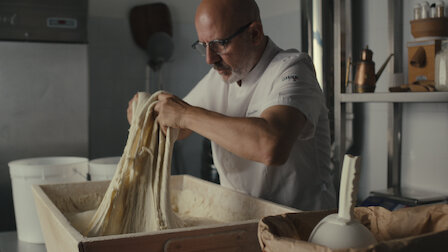
L’Antica Pizzeria da Michele: A Slice of Naples in Every Bite
Nestled in the bustling streets of Naples, Italy, lies a culinary gem revered by pizza enthusiasts worldwide: L’Antica Pizzeria da Michele. Immortalized by Elizabeth Gilbert’s bestselling memoir “Eat, Pray, Love,” this iconic pizzeria has garnered a cult following for its legendary pies and unwavering commitment to tradition. Join us as we embark on a flavorful journey to discover the magic of L’Antica Pizzeria da Michele.
Established in 1870, L’Antica Pizzeria da Michele boasts a rich heritage steeped in Neapolitan culinary tradition. For over a century, this family-owned pizzeria has remained a bastion of authenticity, preserving age-old recipes and techniques passed down through generations. From its humble beginnings as a local neighborhood haunt to its status as a global culinary destination, L’Antica Pizzeria da Michele continues to uphold its reputation as the epitome of Neapolitan pizza perfection.
At the heart of L’Antica Pizzeria da Michele’s menu is its iconic Pizza Margherita, a timeless classic that pays homage to Naples’ culinary heritage. Crafted with just three simple ingredients—San Marzano tomatoes, fresh mozzarella cheese, and fragrant basil—the Pizza Margherita embodies the essence of Neapolitan pizza: simplicity, quality, and unparalleled flavor. Each bite is a symphony of tangy sweetness, creamy richness, and herbal freshness—a testament to the pizzeria’s unwavering dedication to culinary excellence.
What sets L’Antica Pizzeria da Michele apart is its steadfast commitment to traditional pizza-making techniques. From hand-kneading the dough to firing the pies in a wood-burning oven at blistering temperatures, every step of the process is executed with precision and care. The result? Pizzas with charred, pillowy crusts, bubbling pools of molten cheese, and vibrant, aromatic toppings that dance on the palate—a true feast for the senses.
For pizza aficionados, a visit to L’Antica Pizzeria da Michele is akin to embarking on a culinary pilgrimage. The pizzeria’s unassuming storefront belies the culinary treasures that lie within, as hungry patrons line up eagerly for a taste of pizza perfection. Amidst the bustling atmosphere and the tantalizing aroma of freshly baked pies, diners are transported to a world where time-honored traditions and gastronomic delights converge in perfect harmony.
L’Antica Pizzeria da Michele is more than just a pizzeria—it’s a living testament to the timeless allure of Neapolitan cuisine. With its storied history, commitment to tradition, and unparalleled dedication to quality, this iconic establishment continues to captivate the hearts and palates of pizza lovers around the globe. Whether you’re a seasoned pizza connoisseur or a curious foodie seeking an authentic taste of Naples, L’Antica Pizzeria da Michele promises an unforgettable culinary experience—one slice at a time.

The Journey of Neapolitan Pizza
Pizza, a beloved dish cherished worldwide, has a rich and storied history that spans centuries. Among its many variations, Neapolitan pizza stands out as a cornerstone of culinary tradition. Originating from the vibrant streets of Naples, Italy, Neapolitan pizza has captivated taste buds globally, evolving from humble beginnings to becoming a symbol of Italian culinary heritage. Let’s embark on a flavorful journey through the fascinating history of Neapolitan pizza.
The origins of Neapolitan pizza can be traced back to Naples, a bustling port city in southern Italy. It is believed that pizza in Naples dates as far back as the 18th century. Initially, pizza was a simple and affordable food consumed by the working class. Flatbreads topped with tomatoes, garlic, oil, and cheese were sold from local bakeries and street vendors, providing a quick and satisfying meal for Neapolitans on the go.
One of the most iconic moments in the history of Neapolitan pizza occurred in 1889 when Queen Margherita of Italy, accompanied by her husband, King Umberto I, visited Naples. Legend has it that the queen grew tired of the extravagant French cuisine served at the royal court and expressed a desire to taste the local fare. Renowned pizza maker Raffaele Esposito was tasked with creating a special pizza for the queen. He crafted a pie featuring tomatoes, mozzarella cheese, and fresh basil to represent the colors of the Italian flag: red, white, and green. This pizza, named Pizza Margherita in honor of the queen, quickly gained popularity and became a symbol of national pride.
As pizza gained popularity beyond Naples, efforts were made to preserve its authenticity and quality. In 1984, the Pizza Association Verace Napoletana (AVPN) was founded with the mission of safeguarding the traditional Neapolitan pizza-making process. The AVPN established strict guidelines outlining the ingredients, preparation methods, and even the type of wood-fired ovens required to produce authentic Neapolitan pizza. This organization played a crucial role in maintaining the integrity of Neapolitan pizza and elevating its status as a culinary delicacy.
In recent decades, Neapolitan pizza has transcended its Italian origins and gained a devoted following worldwide. Pizzerias dedicated to serving authentic Neapolitan pizza have proliferated in cities across the globe, from New York to Tokyo. While traditional Neapolitan pizza adheres to specific standards set by the AVPN, variations and interpretations of the classic recipe abound, reflecting local tastes and ingredients.
Neapolitan pizza, with its humble beginnings and royal endorsement, has emerged as a global culinary phenomenon. Its journey from the streets of Naples to international acclaim is a testament to the enduring appeal of this simple yet sublime dish. Whether enjoyed in its traditional form or with a modern twist, Neapolitan pizza continues to delight food enthusiasts and unite cultures around the world, one delicious slice at a time.
A photo taken on a recent trip to L’Antica Pizzeria Da Michele, Naples.


